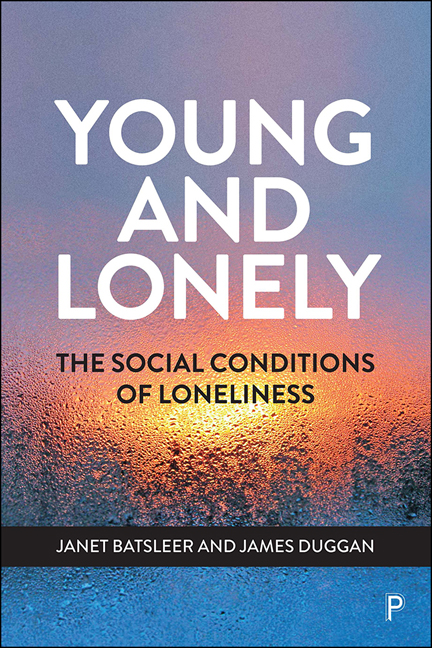Book contents
- Frontmatter
- Contents
- Notes on the Authors
- Acknowledgements
- Preface
- 1 Animate, Attune, Amplify
- 2 Finding Oneself a Loneliness Agenda
- 3 I’M New Here: Creating a New Research Project and A Young Person Led Research Agenda
- Part I The Social Conditions of Loneliness
- Part II The Experience of Loneliness
- Part III Building Friendship and Connection
- References
- Index
Part I - The Social Conditions of Loneliness
Published online by Cambridge University Press: 18 March 2021
- Frontmatter
- Contents
- Notes on the Authors
- Acknowledgements
- Preface
- 1 Animate, Attune, Amplify
- 2 Finding Oneself a Loneliness Agenda
- 3 I’M New Here: Creating a New Research Project and A Young Person Led Research Agenda
- Part I The Social Conditions of Loneliness
- Part II The Experience of Loneliness
- Part III Building Friendship and Connection
- References
- Index
Summary
The experience of loneliness and the accompanying movement from loneliness to the valuing of solitude was an aspect of the development of individualism in Modernity, and associated with Romanticism in particular. The most famous poem of the Romantic movement, Wordsworth's Daffodils, once learned by heart by children as a condition for being permitted to leave school, begins with loneliness – ‘I wandered, lonely, as a cloud …’ but ends with a ‘flash upon that inward eye, which is the bliss of solitude’. So loneliness can be understood as a ubiquitous presence in modernity. But we are not concerned here simply with the loneliness which accompanies modern life and which can become, with properly artful or skilful attention, a practice of solitude. The rehearsal of this undoubted truth should not prevent the recognition that there are specific social conditions of inequality that make access to social opportunities and social connection difficult and loneliness more likely. The social conditions of poverty, of disconnected small towns and of competitive and individualistic education systems are the focus of the following three chapters and we argue that ‘youth loneliness’ cannot be addressed apart from an understanding of these conditions. Most discussion of loneliness has focused on individual experiences of social isolation and the consequences of this for the personal experience of loneliness, such as the development of hyper-vigilance and the risks to mental health. However the significance of poverty as a theme meant that our starting point instead became the social conditions which promote isolation and which may precipitate loneliness. It was therefore necessary to consider unequal or unjust social conditions and to encounter the emotional field that developed within them rather than seeing loneliness simply as a characteristic of individuals. There are instead lonely times, lonely places, lonely circumstances. One aspect of social conditions that required exploration is ‘anomie’: the sense of deep disconnection from others that arises from social isolation and an actual lack of daily contact with other people. There are people who can go days without speaking to anyone, often as a consequence of poverty. A second was the emotional impact of poverty.
- Type
- Chapter
- Information
- Young and LonelyThe Social Conditions of Loneliness, pp. 37 - 38Publisher: Bristol University PressPrint publication year: 2020

